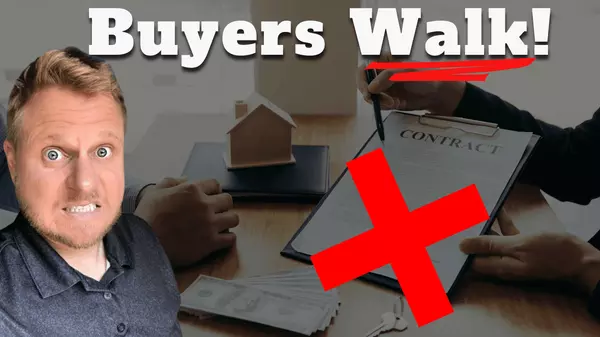Is the Austin Housing Market Crashing? What Buyers and Sellers Need to Know in 2025
by Jeremy & Eileen Knight
The Austin real estate market has always been a hot topic, and recent reports about home price declines have raised questions about the market’s stability. In February 2025, home prices in Austin dropped year-over-year. This has led many to wonder, “Is the housing market crashing, or is this the perfect time for buyers to make a move?”
Let’s break down the numbers, explore what’s going on in the Austin market, and discuss whether this is a buying opportunity or a warning sign for potential homeowners and investors. We'll also address a major concern for homeowners: property taxes. Could these price drops impact your tax bill?
Austin Home Prices: A Closer Look at the Decline
According to recent data, the median price for homes in Austin has fallen by 3.9% compared to last year, bringing the price down to $430,000. While this might sound concerning, it’s important to understand what this means for the broader market. The decline is not necessarily a sign of a market collapse, but rather a correction that is more in line with historical trends.
But let’s take a deeper dive into what’s going on. The Austin real estate market is experiencing a slower pace of sales, with closed sales down year-over-year. For example, the total number of active listings in the Austin metro area has risen by 16.7%, indicating more homes are available. This is creating a bit of a buyer's market, where buyers have more options and leverage than in previous years.
Inventory Levels: A Key Indicator
One of the most important factors influencing the Austin housing market is the inventory levels. Right now, Austin has 5.3 months of inventory, which means that if no new homes were listed, it would take 5.3 months to sell through the current inventory. A balanced market typically has around 6 months of inventory, so we’re getting close to that threshold, which suggests that it may be a buyer's market.
Let’s break it down by region:
-
Austin proper: 5.3 months of inventory
-
Williamson County: 5 months
-
Hays County: 6.4 months
-
Bastrop County: 7.2 months
-
Travis County: 5.8 months
This increase in inventory is a significant shift from the tight housing market that dominated the past few years. With more homes to choose from, buyers now have a little more breathing room, but sellers need to be strategic in pricing their properties competitively.
The Impact of Builder Confidence and Interest Rates
Another aspect to consider is the level of builder confidence. Builders in Austin are feeling the pinch, with confidence levels dropping to 39 from 43. This indicates that they are less optimistic about the market and its future prospects. Several factors are contributing to this dip in confidence, including rising construction costs due to tariffs and other economic factors. Moreover, the ongoing rise in interest rates is making it more expensive for buyers, especially those purchasing newly built homes.
Currently, mortgage interest rates are hovering around 6.8%, slightly down from recent peaks of 7.5%. While this drop may provide some relief to buyers, it’s still a higher rate than many were used to in the past. The higher rates have made it more difficult for some buyers to afford homes, especially those in higher price brackets.
The Price List to Close Ratio: A New Trend Emerging
One interesting trend to note is the increase in the list-to-close price ratio, which has risen to 93.5%. This means that homes are being listed at more competitive prices and still closing at prices that are slightly below the listing price. In the past, the ratio was lower, with homes often selling 8% below the list price. Now, sellers seem to be pricing their homes more strategically, which could make it easier for buyers to negotiate a better deal.
For buyers, this means that there is an opportunity to secure properties at more favorable prices, but it also means that they should remain diligent and work closely with an experienced real estate agent to ensure they’re getting the best deal possible.
How Does This Impact Sellers?
For sellers, the message is clear: if you’re planning to sell in Austin, it’s crucial to price your home correctly. The market is showing signs of softness, and overpricing your property could result in it sitting on the market for an extended period. With inventory levels rising and the overall market cooling, you need to be strategic in your pricing to avoid getting stuck with a home that isn’t moving.
If you’re a seller, working with a knowledgeable agent who understands the current market dynamics is essential. Proper pricing, staging, and marketing strategies can help you stand out in this competitive market.
Property Taxes: Will the Price Drop Help You Save?
Another major concern for homeowners in Austin is property taxes. Last year, the city of Austin raised its overall budget from $5 billion to $5.5 billion, and there are indications that the budget could rise even further this year. While many people are hoping that the recent price declines will result in lower property taxes, it’s unlikely that the city will reduce tax rates based on the current market conditions.
As property values continue to shift, many homeowners are left wondering if this will impact their tax bills. While the drop in home prices may slightly lower your home’s assessed value, it’s important to remember that property taxes are determined by more than just home prices—they also depend on the city’s budgetary needs and the overall economic climate.
Should You Buy or Sell in Austin Right Now?
For buyers, now might be a good time to get into the market. With more inventory available, you have more choices and a better chance of negotiating a favorable deal. Interest rates are still a bit high, but they’re lower than recent peaks, which makes it more affordable to buy a home now than just a few months ago.
For sellers, the situation is more nuanced. While home prices are down, there are still buyers in the market, particularly those looking for homes in the sub-$500,000 range. In fact, 63% of homes sold in February were in this price bracket. If you’re selling in this range, you may still see strong demand. However, if your home is priced higher, it may take longer to sell, and you’ll need to be flexible with your pricing and negotiation strategies.
What Does the Future Hold for the Austin Housing Market?
Looking ahead, it’s difficult to say exactly what will happen in the Austin housing market. There are several factors at play, including interest rates, inflation, and economic uncertainty, that could impact the market in the coming months. However, one thing is certain: the long-term trend for home prices in Austin has generally been upward.
Historically, home prices have risen over time, even in the aftermath of market corrections. If you plan to stay in your home for the long haul, this short-term volatility may not matter much. However, if you’re looking to time the market and make a quick profit, you might need to wait a few more years for the next major price swing.
Conclusion: A Market of Opportunity for the Right Buyers and Sellers
In conclusion, while the Austin housing market may not be at its peak right now, it’s certainly not in freefall either. Buyers can take advantage of more inventory and slightly lower prices, while sellers must price their homes correctly to attract the right buyers. Whether or not this is a “crash” is still up for debate, but it’s clear that Austin remains one of the most dynamic and sought-after real estate markets in the country.
As always, whether you’re buying or selling in Austin, it’s important to stay informed and work with a real estate professional who understands the current market trends. If you need help navigating the Austin market, reach out to an experienced agent like myself, Jeremy Knight with The Night Group. I’m here to help you make the best decisions for your real estate goals.
Categories
Recent Posts












